Embraer / IAI-Elta Praetor P600 AEW: large capacities in a small package.
Defense technology is becoming more and more expensive and war scenarios, more complex. The discussion between quantity and quality is over: quality won because no one can pay for quantity anymore. Even the world’s greatest powers deploy far fewer means of combat than they could 30 years ago.
Within this context of increasing costs, the concept of «force multiplier» is paramount. Basically, it is about means or technologies that allow «doing more with less». And one of the multipliers par excellence is the Airborne Early Warning and Control (AEWC).
The first airplanes of this type, with heavy aerial surveillance radars, were designed from big four-engine frames. This was necessary because the equipment was heavy and bulky, many operators were required to control the operational theater from the aircraft, and smaller aircraft did not have the range, height or flight capabilities required for a mission of the type.
With time and the evolution of technology, the weight, volume, and electrical consumption of electronic equipment decreased. And thanks to the automation of processes, fewer onboard operators were needed, therefore twin-engine airplanes were acquiring the necessary features to be able to assume this type of mission. So the new generations of airborne AEW systems came mounted on twin-engine, commercial, or executive high-performance aircraft.
And here is where Embraer and IAI-Elta make an interesting bet, introducing an AEW airborne system based on a super-midsize category aircraft to the market, inaugurating a new niche.
[youtube https://www.youtube.com/watch?v=VBLYFIsBeHE&w=727&h=409]
Aviacionline contacted Embraer as well as IAI / Elta to ask them some questions, in order to provide more complete information. They were kind enough to respond and this is what they told us:
What does each partner bring to the P600 AEW program?
Embraer’s experience consists of defining technical and operational requirements, certification, and aircraft support. In addition, Embraer has a proven experience of more than 20 years in the development and production of AEW aircraft, counting among its main clients the governments of Brazil, Mexico, Greece, and India.
IAI / ELTA is recognized as a leading Defense Systems House in local and international markets. ELTA has more than 30 years of experience in the field of «special mission» aircraft. ELTA is recognized as a world leader in commercial jet-based special mission aircraft and as a leading provider of aerial radars.
What is the estimated cost of the P600 AEW, compared to its competitors in the market?
The P600 AEW solution will provide a true airborne surveillance capability, with up to 7.5 hours of mission time and at the most affordable cost on the market, based on a modern aerial platform and a set of “state of the art” mission systems. The market price will be the result of the requirements and needs of each individual client.
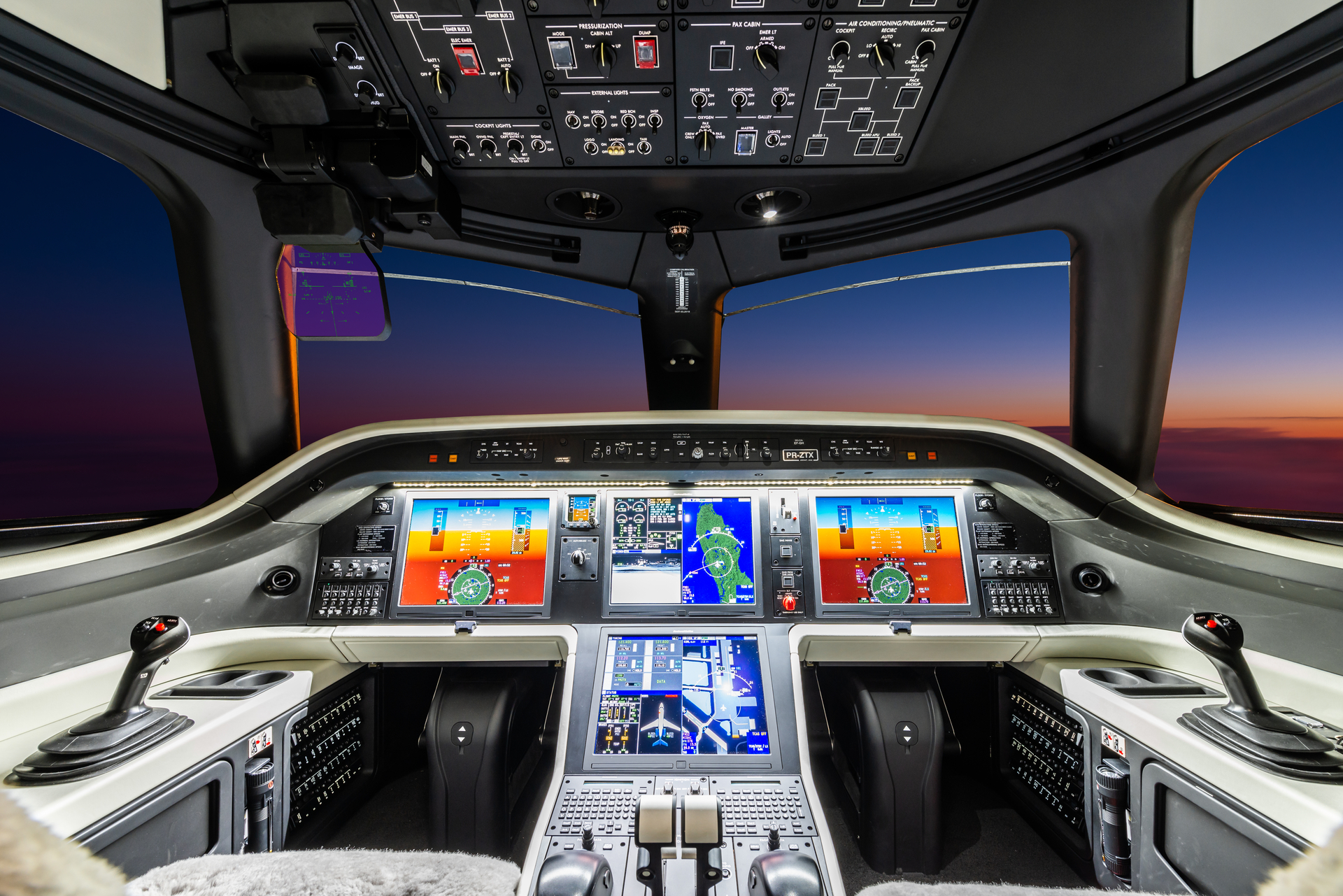
What are the capabilities of the primary sensor?
The P600 AEW is equipped with a state-of-the-art, low-weight, high-efficiency dorsal-mount radar, utilizing GaN AESA technology integrated with an advanced AEW & C mission system, for various defense and security missions. Thanks to superior aircraft performance and an advanced mission system, the P600 AEW provides accurate and reliable long-range surveillance against all air and maritime threats at a fraction of the cost of today’s modern AEW systems.
The P600 AEW Integrated Radar & IFF system features a multi-function, 4D, S-band AESA (Active Electronic Scanning Array) radar, designed for the detection, identification, and tracking of targets in the air and on the sea surface.
The radar has advanced ECCM (Electronic Counter-Countermeasures) capabilities, automatically overcoming natural and synthetic interference.
The radar provides 240 ° coverage using two sets of antennas on a dorsal mount, while the integrated IFF interrogates in both civilian and military mode and supports ADS-B responses using a 360 ° antenna.
Both systems (radar and IFF) are 4th generation and high performance. They operate with high efficiency, low false alarm rate, and high detection and target identification capacity, within the surveillance volume, through the different selectable search regimes.
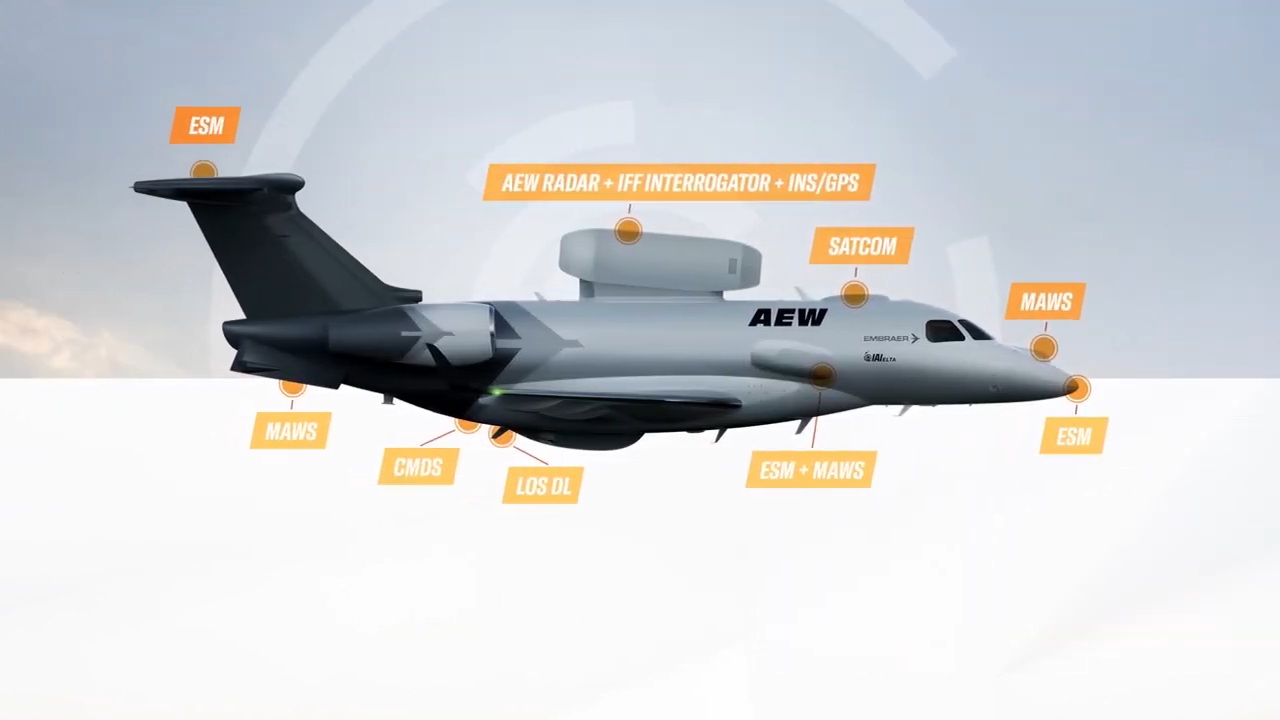
What are the detection ranges for the different types of aerial targets?
ELTA’s highly advanced 4th generation digital GaN AESA radar is capable of detecting different types of air and sea targets, with modern characteristics, at very long distances.
The detection range for each type of target can vary and depends on the radar cross-section (RCS) of the target, speed, the aspect of the target, the altitude of the AEW aircraft, etc.
The operators can efficiently manage radar energy to optimize radar performance against any type of target or threat.
What are the command and control capabilities of the P600 AEW, compared to other AEWs of comparable size or slightly larger, considering it has 3 operator consoles?
The P600 AEW is integrated with a mission management system called Arkhe, from the Atech company (an Embraer group company) that automatically generates and maintains the integrated air and surface situation from the data of all the integrated sensors, operator inputs, and external data sources.
The operator has the ability to assign specific areas and conditions to optimize the initiation of target tracking, continuously monitor the behavior and attributes of the tracked target, using a specific set of automatic rules, and select and vectorize the best interceptor for each target during all the phases of the mission.
The three P600 AEW operator workstations share a common display system where tasks and functionality are designated based on each operator’s profile, allowing for faster personnel changes and rotations. Advanced automation and data fusion technologies reduce task complexity and crew workload, enabling efficient operation with a small crew.
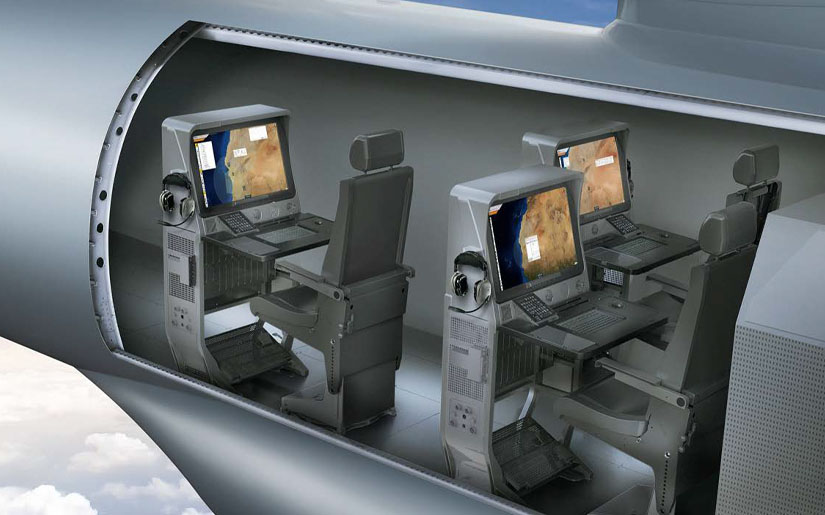
Does the P600 AEW have the ability to link with drones and coordinate them in strike operations?
The P600 AEW has a complete communications package ensuring interoperability and a joint operation with existing assets.
What self-defense systems does the aircraft have?
Its self-protection suite (SPS) consists of a missile approach warning system (MAWS) and a passive radar warning system (RWR) provided by the electronic support system (ESM). Optionally, the P600 AEW can be equipped with a Countermeasures Dispensing System (CMDS) (Chaff & Flare) integrated with both warning systems and a control panel for the crew.
The Electronic Support Measurement (ESM) system performs 360 ° coverage in the 2 to 18 GHz frequency range to provide the heading and location of each emitter detected in the air and on the ground. Through signal analysis capabilities, the ESM system automatically integrates with the Radar & IFF system to provide an integrated picture of the situation.
Future possibility of incorporating an in-flight refueling system?
For the moment, an Air-to-Air refueling system has not been considered.
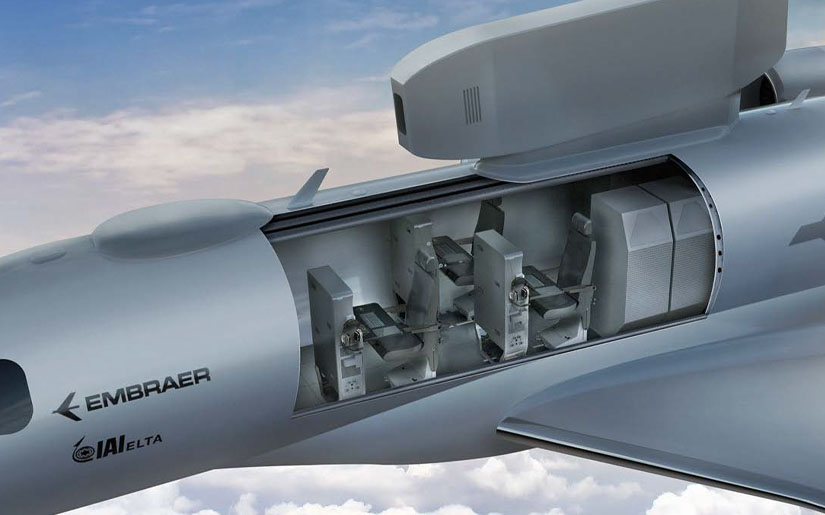
Is there interest in the product from the Brazilian or Israeli Air Force?
The FAB is currently engaged in the E-99 modernization program, which has many years of service ahead of it. As for the Israel Air Force, it currently uses the G550 CAEW which was developed by IAI / ELTA and entered operational service in 2008. The development of the P600 AEW is based on IAI / ELTA technologies and the experience of the CAEW and several others AEW programs.
Within the Embraer portfolio, does the P600 AEW replace or complement the E-99?
The P600 AEW system will replace the E-99 AEW solution based on the E-145 Embraer Regional Jet.
What markets are you targeting with the new product?
The main markets for the P600 are countries that need aerial surveillance and are in conflict or geopolitical tensions. Embraer and ELTA are strongly prospecting the market.
What number of units do you envision for the potential market for the P600AEW?
Embraer and ELTA see clear growth in demand for AEW systems. Initially, the AEW market was limited to large countries with a large defense budget. In the last 2 decades, several smaller countries have bought AEW capacity and this trend appears to continue to grow in this decade. In addition, we see several countries looking to replace (and increase their number) their old AEW systems, based on large, old, and expensive to operate and maintain aircraft. We believe that the potential market for the P600 AEW includes more than 10 countries with an overall potential of several dozen aircraft.
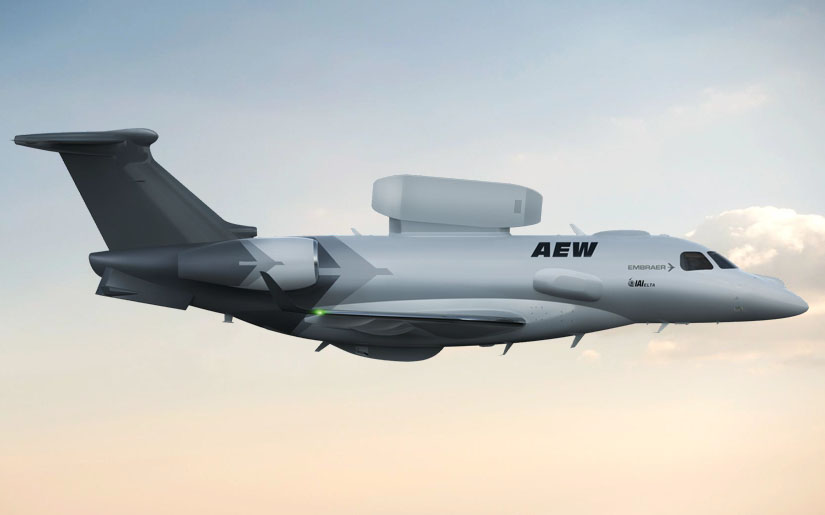
The system has a lot of potential because it allows nations with modest defense budgets to have access to capabilities that until a few years ago, were exclusive to the world’s greatest military powers.

/https://aviacionlinecdn.eleco.com.ar/media/2020/12/Praetor-600-AEW-1.jpg)
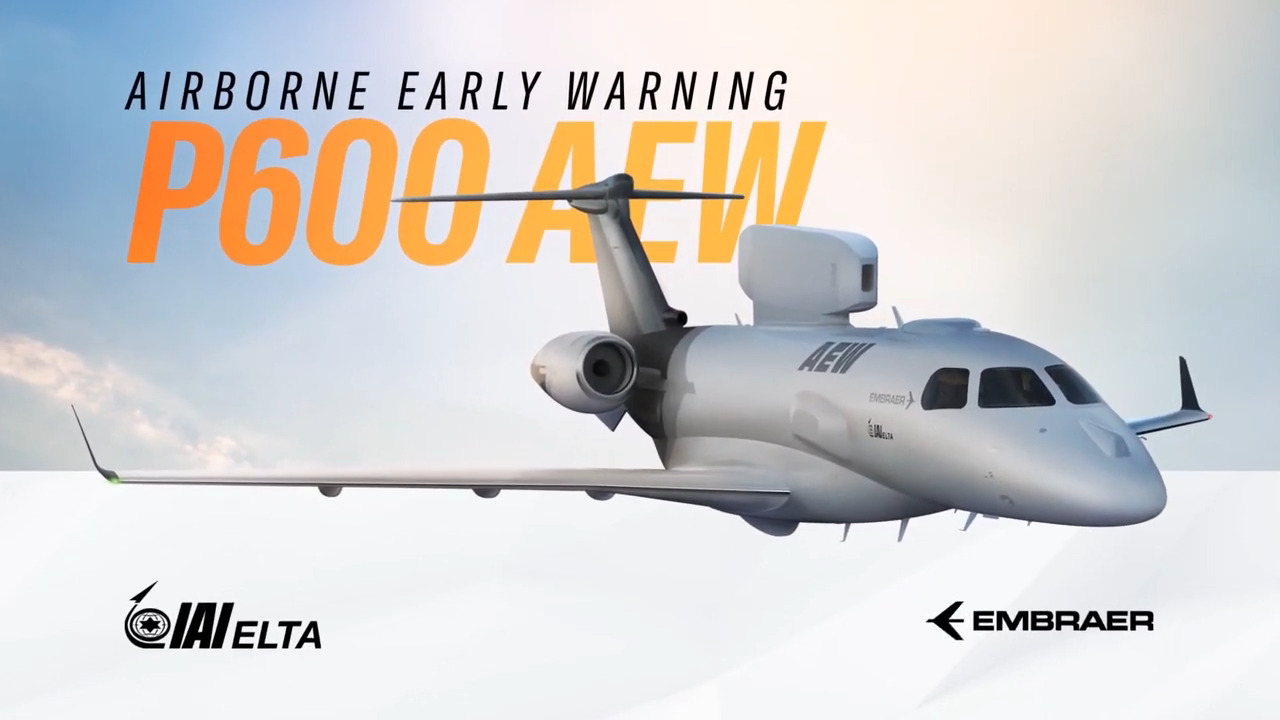

Para comentar, debés estar registradoPor favor, iniciá sesión